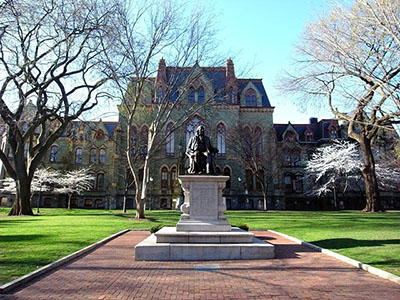Speaker
Dr
Alexandr Kozlinskiy
(University Heidelberg)
Description
A new track reconstruction algorithm developed for the high track multiplicity
environment of the *Mu3e* experiment, where track uncertainties are
dominated by multiple scattering, is presented.
The goal of the *Mu3e* experiment is to search for the lepton flavor
violating decay
$\mu^+ \rightarrow e^+ e^- e^+$. To reach a sensitivity of $10^{-16}$ the
experiment will be performed at a future high intensity beam line (*HiMB*)
at the Paul-Scherrer Institute (Switzerland) providing more than $10^9$ muons
per second. Muons with a momentum of $\approx$ 28 MeV are stopped on a target.
Their decay at rest, in which mainly low momentum positrons with energies below
53 MeV are produced, is analyzed by the *Mu3e* tracking
detector consisting of four cylindrical layers of thin silicon pixel sensors.
The high granularity of the pixel detector with a pixel size of
$80 \times 80~\mu\textrm{m}^2$ allows for a precise track reconstruction in the
high occupancy environment of the *Mu3e* experiment reaching 100 tracks per
readout frame of 50 ns. These tracks will be reconstructed online using a
triggerless readout scheme. The implementation of a fast 3-dimensional multiple
scattering fit based on hit triplets, where spatial uncertainties are ignored,
is described and performance results in the context of *Mu3e* experiment
are presented. Also the implementation on Graphics Processor Units (GPUs) for
fast online reconstruction is discussed.
Author
Dr
Alexandr Kozlinskiy
(University Heidelberg)
Co-authors
Andre Schoening
(Physikalisches Institut-Ruprecht-Karls-Universitaet Heidelberg-U)
Moritz Kiehn
(Ruprecht-Karls-Universitaet Heidelberg)
Niklaus Berger
(Uni Heidelberg)
Mr
Sebastian Schenk
(University Heidelberg)
